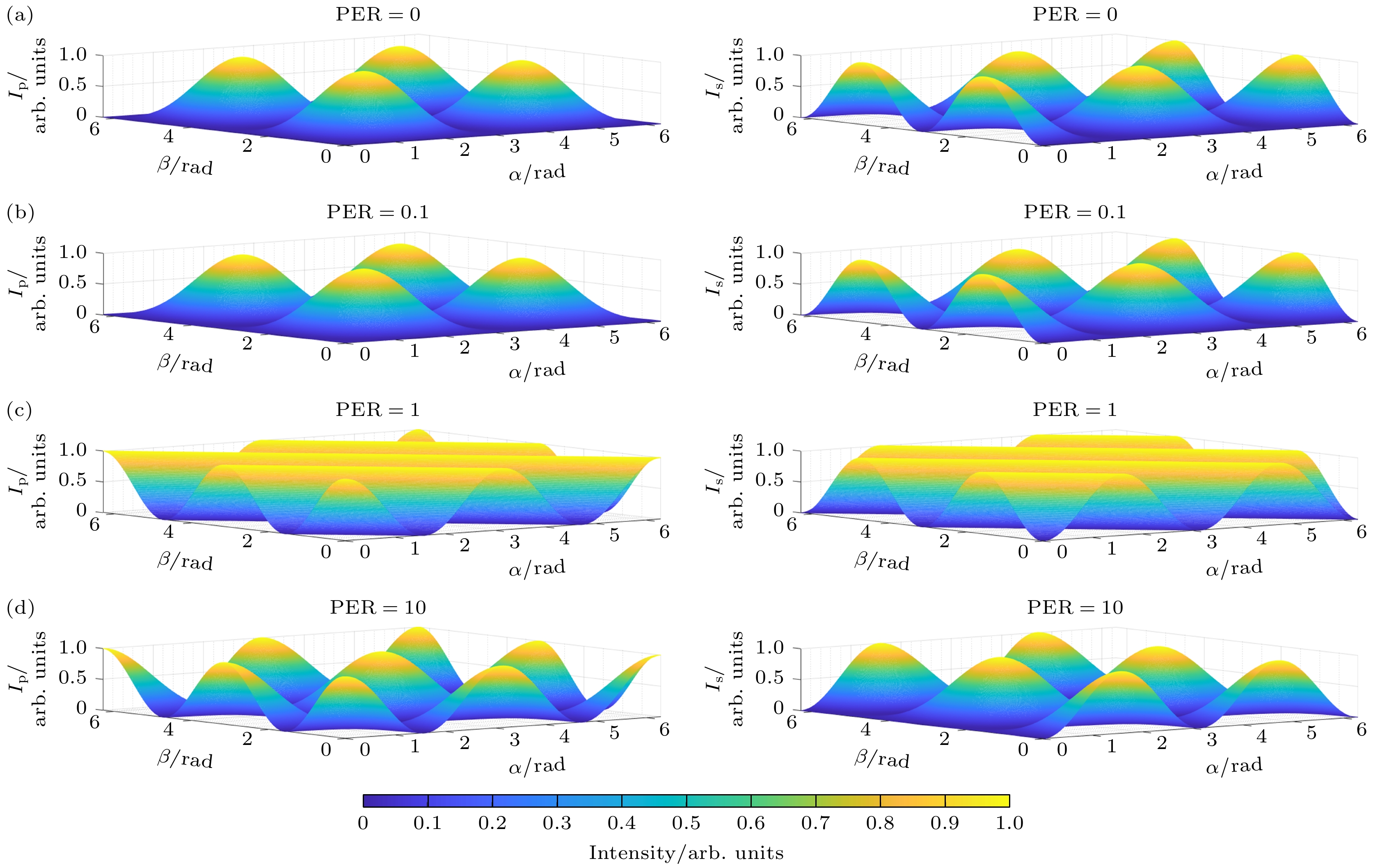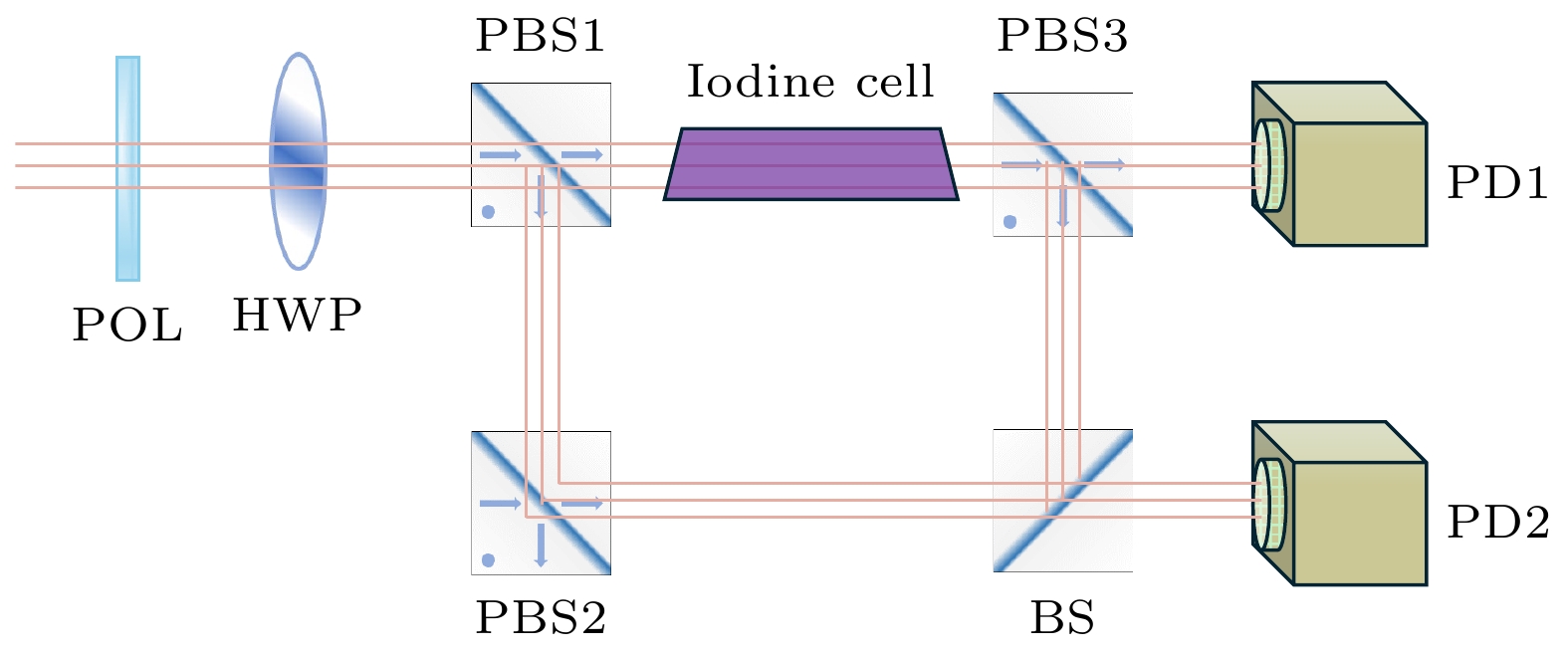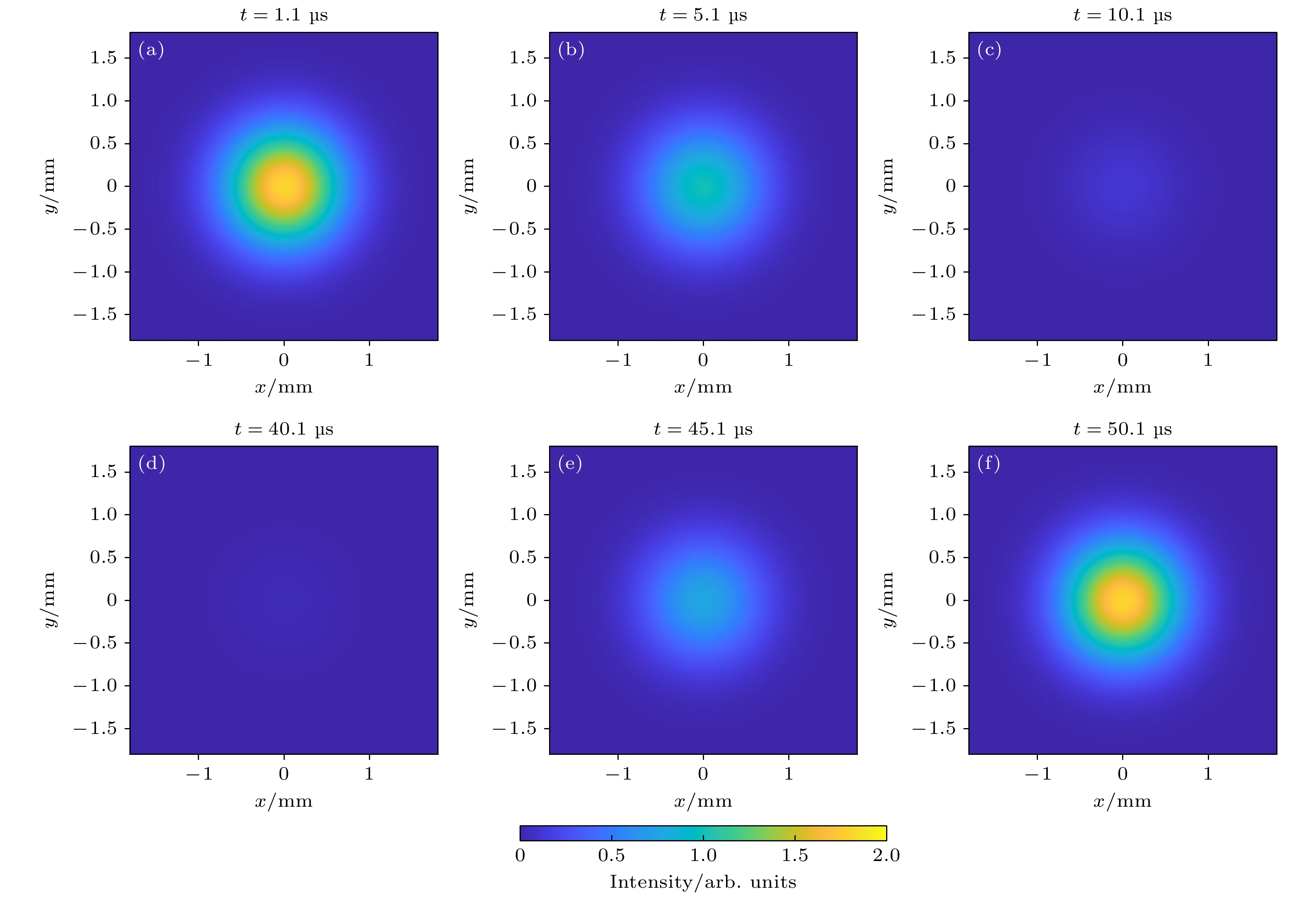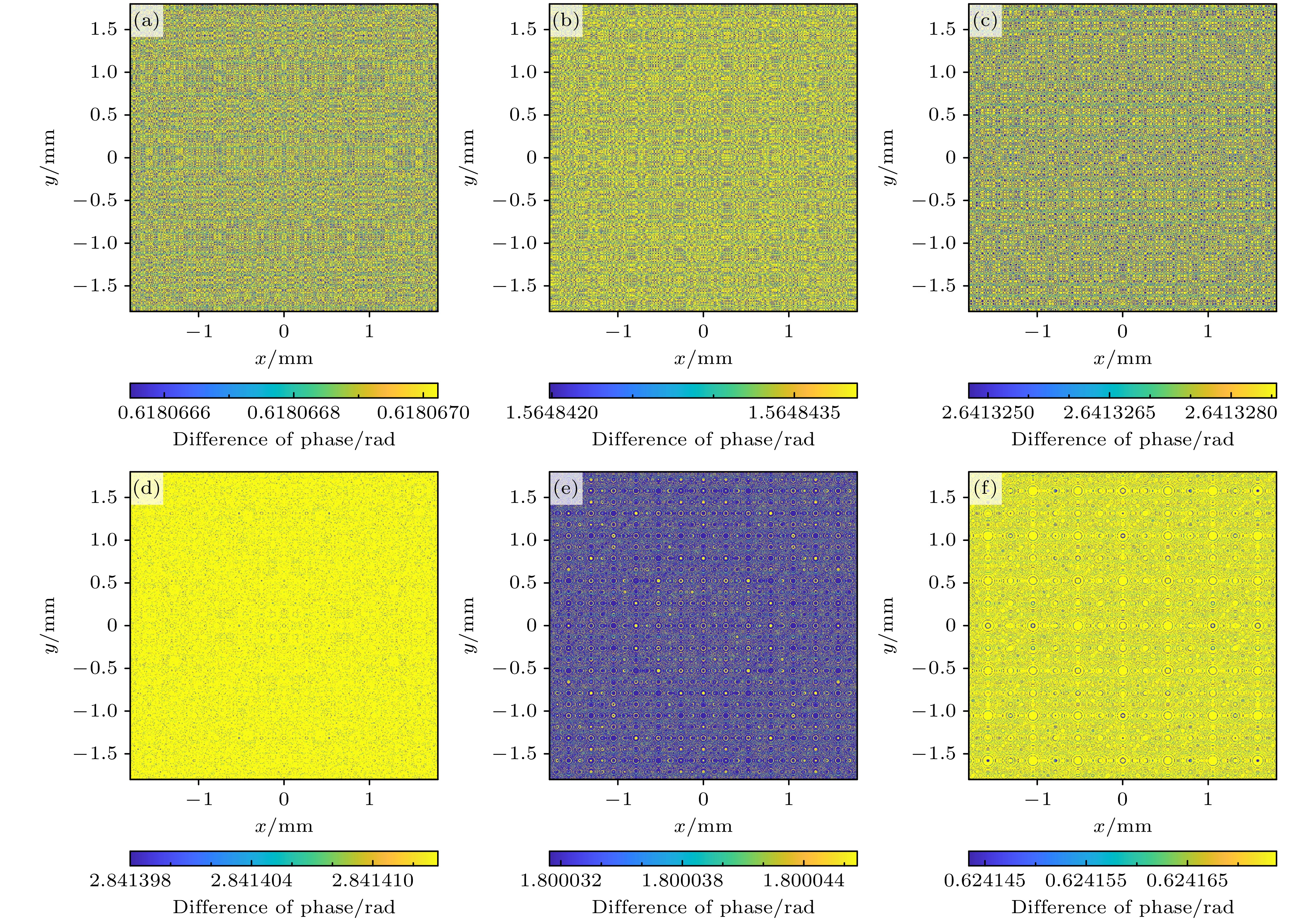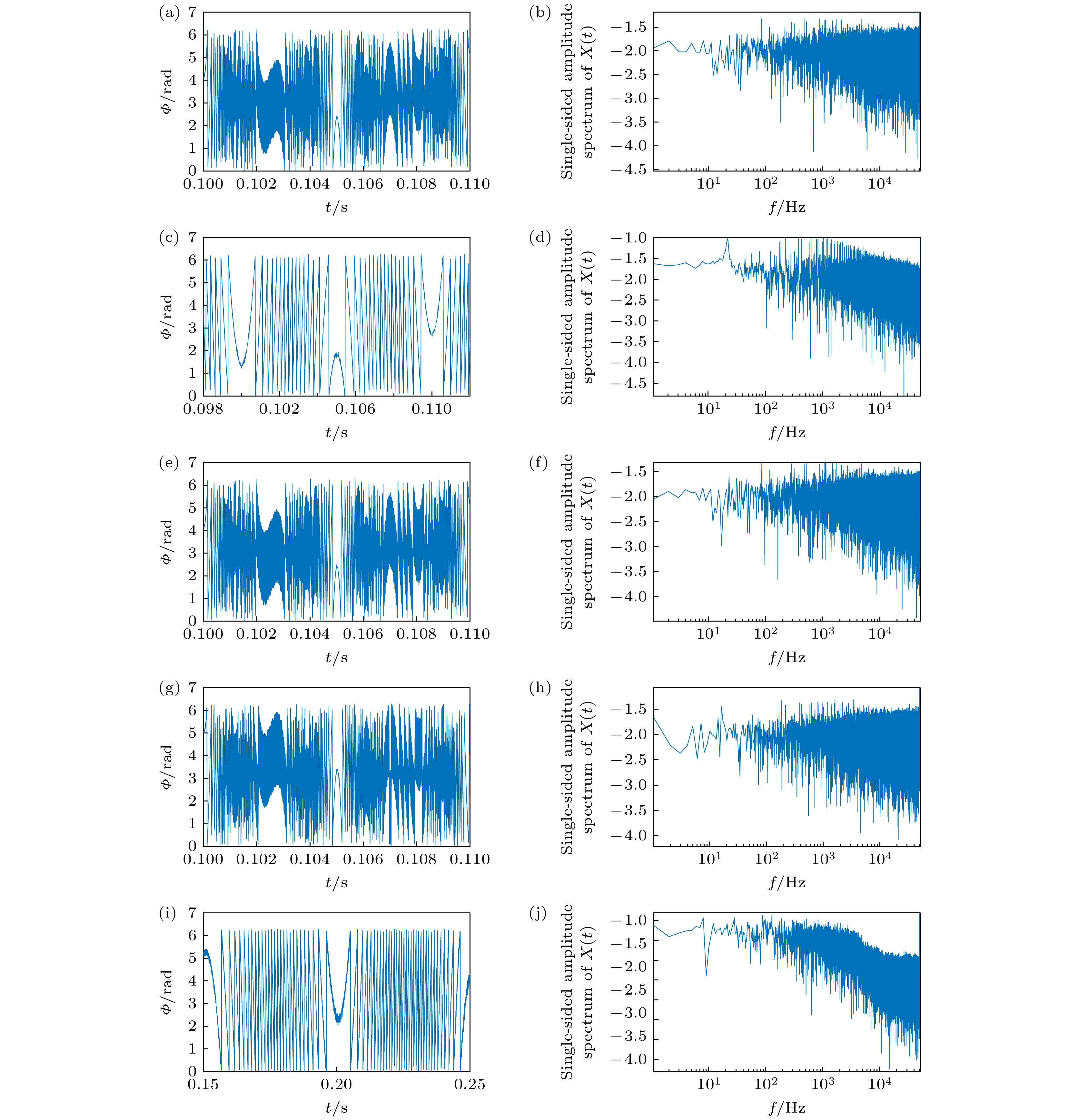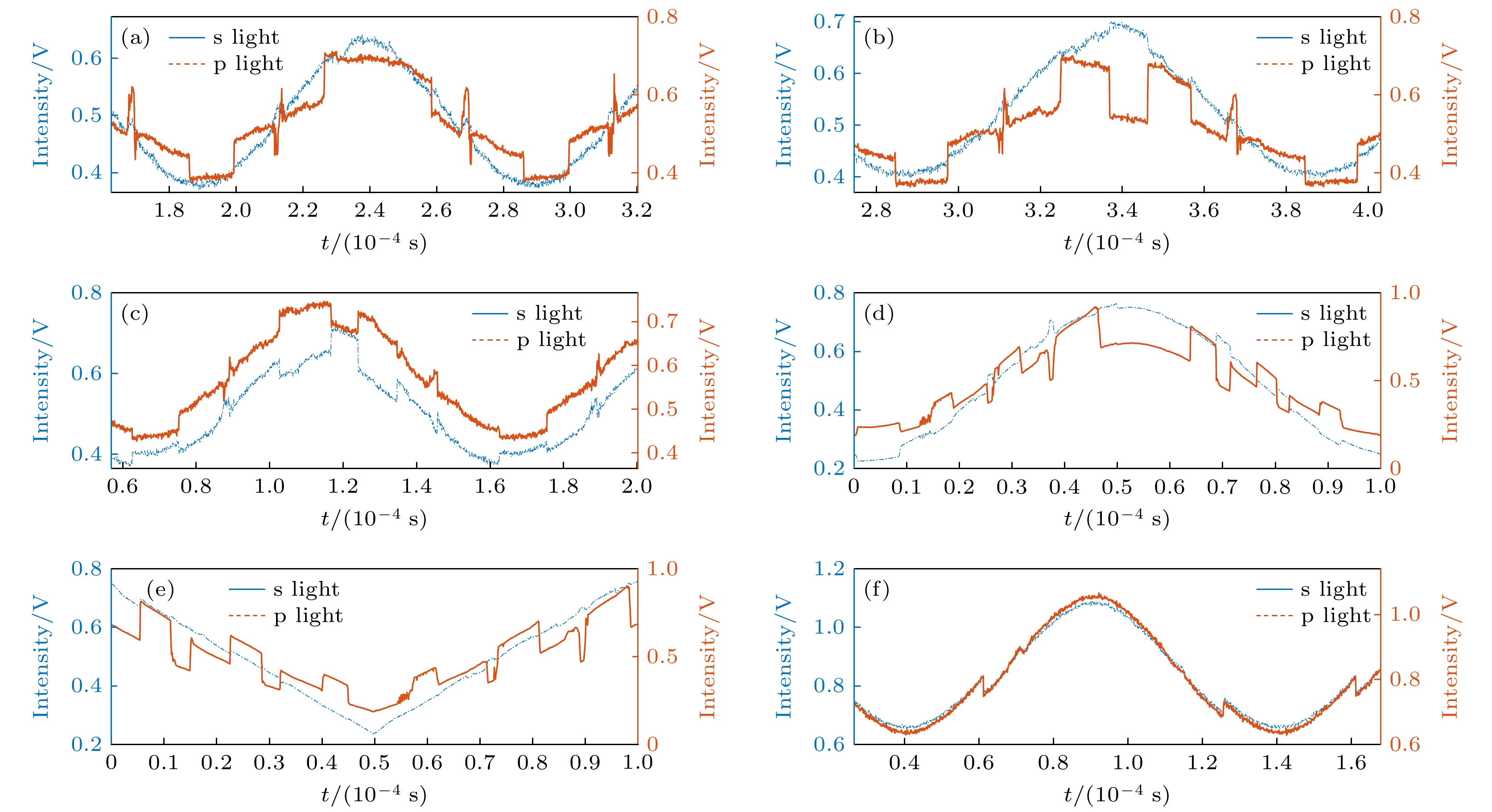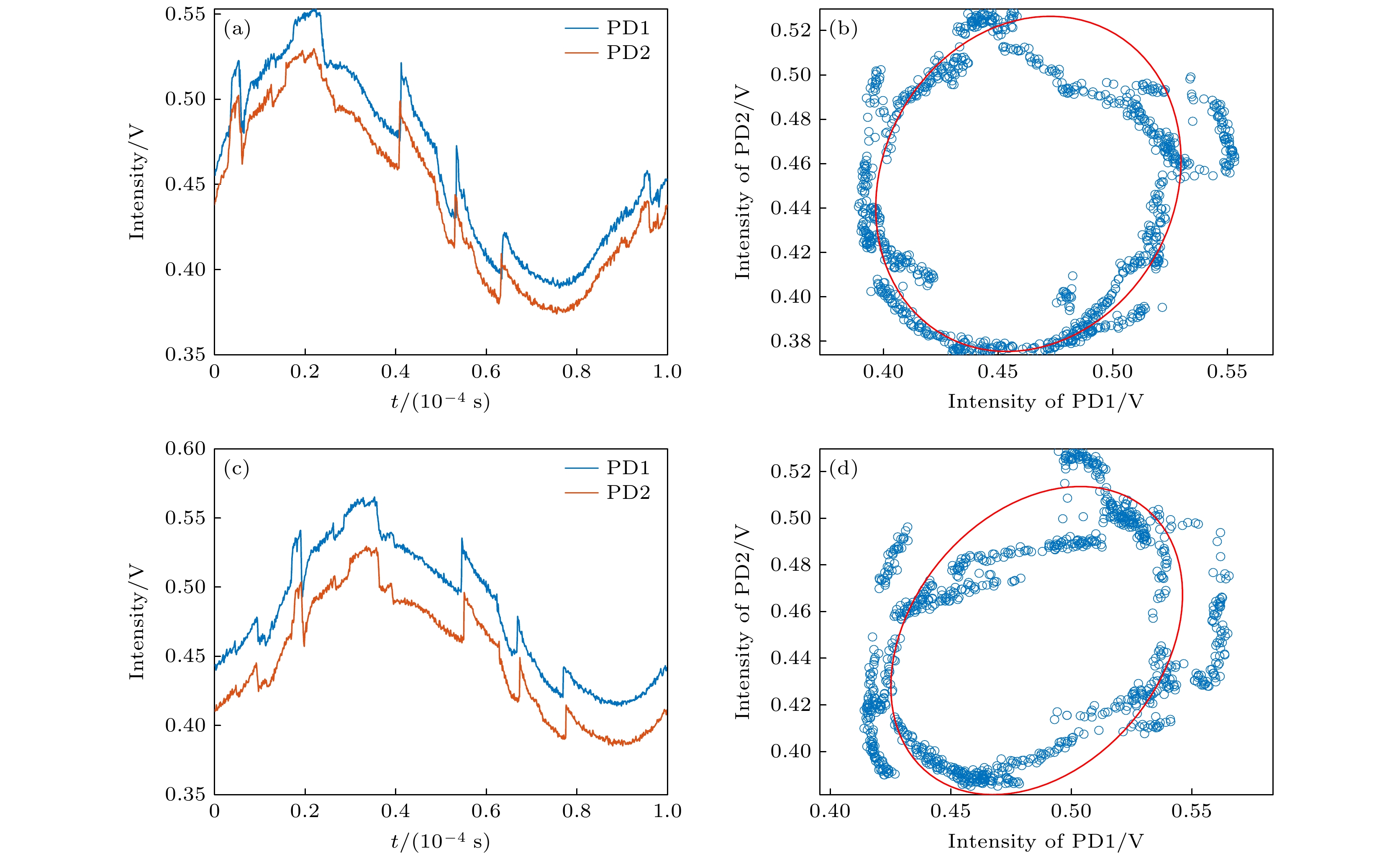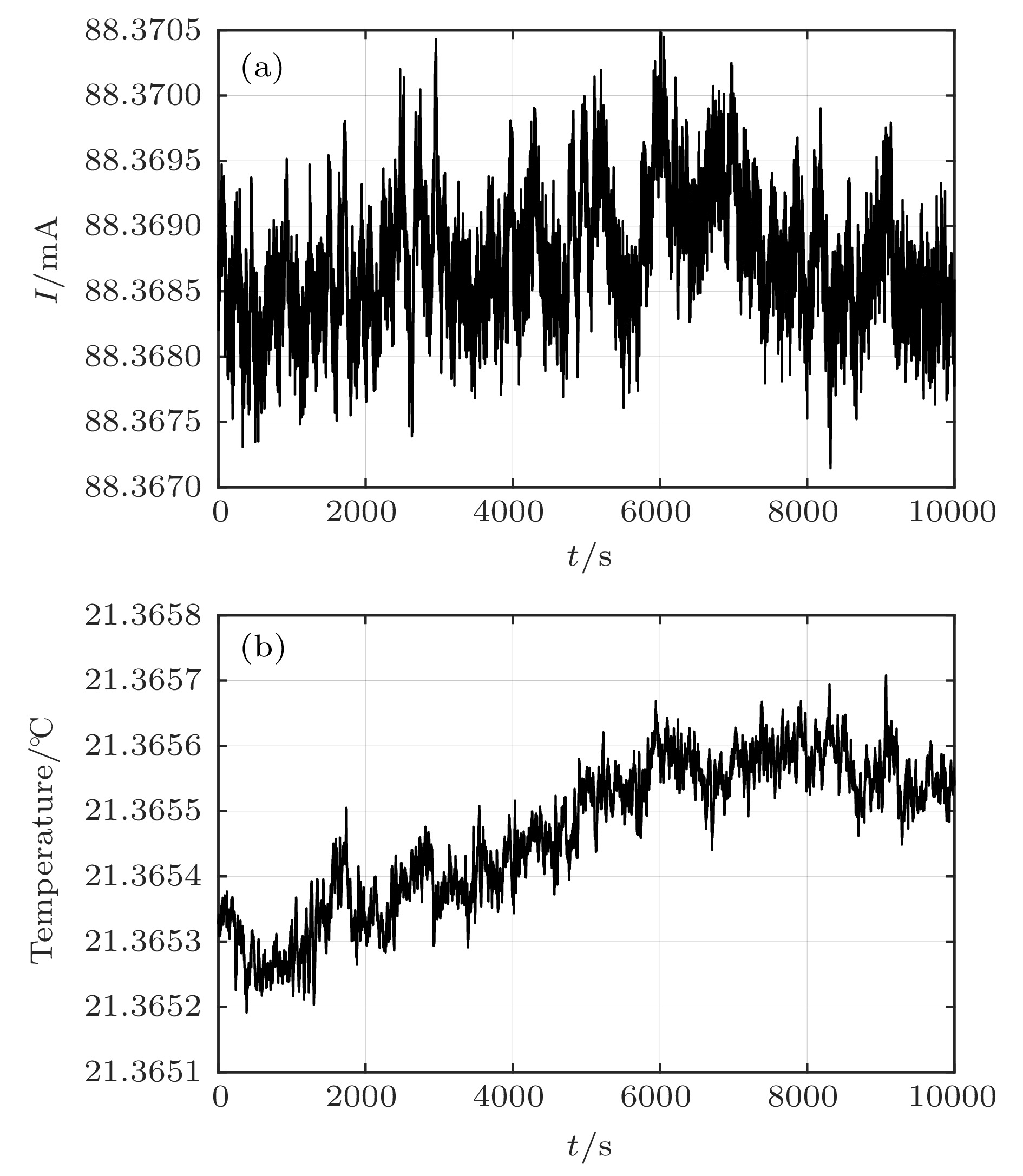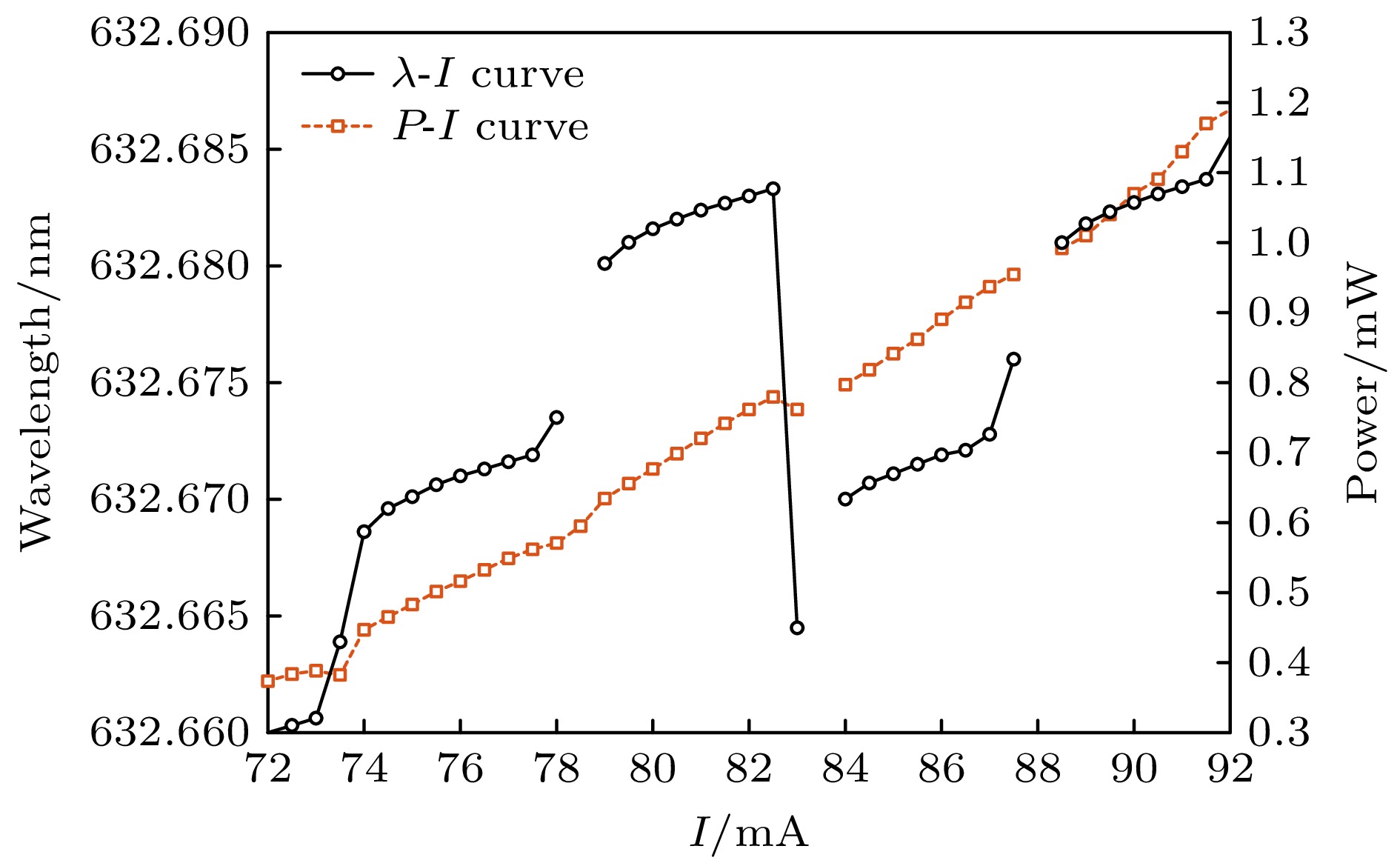-
波长调谐激光器广泛应用于精密干涉测量、超稳激光器等领域. 激光器波长调谐精度、稳频精度是表征其性能的重要参数. 为提高激光器调谐精度、稳频精度, 常采用双光路进行闭环控制, 如饱和吸收空间稳频光路, 控制光路探测的信噪比是决定控制精度的重要参数. 研究影响控制光路探测信噪比的相关参数, 给出相应的影响关系, 对进一步提升激光器调谐精度、稳频精度具有重要的工程应用价值. 本文理论推导了光学器件核心指标、系统杂散光等参数与探测信噪比之间的相互关系, 搭建了基于饱和吸收的反馈稳频激光系统. 实验结果表明由于强度噪声的存在, 探测器信噪比降低至15 dB且波形严重失真, 通过偏振态控制可将信噪比提升至31 dB且波形良好. 通过控制变量实验, 验证了理论研究的正确性, 该研究能够作为稳频控制光路光学器件选型、系统参数设计的依据.
Wavelength-tunable lasers play a crucial role in fields such as precision interferometry and ultra-stable laser applications. The precision of wavelength tuning and the accuracy of frequency stabilization in lasers are the key indicators of their performance. To improve these performance, closed-loop control with dual-beam paths, such as saturated absorption spectrum spatial stabilization, is commonly utilized. The signal-to-noise ratio (SNR) of the control beam detection significantly affects the control precision. Investigating the parameters that influence this SNR and analyzing their relationships are of great engineering significance for further improving the tuning precision and frequency stabilization accuracy of lasers. To increase the SNR, this work examines intensity noise in wavelength-modulation systems based on the polarizer-phase-delay-polarizer model. A polarization beam splitter (PBS) cannot achieve a zero polarization extinction ratio (PER), thus introducing intensity noise from the interference between p and s polarization light. Additionally, non-ideal stray light, such as back-reflected and scattered light from optical components, further reduces the SNR of the detection signal when it converges on the detector’s active area. This work carries out a detailed analysis of these two types of noise, exploring the effects of factors such as PER, wavelength-modulation range, beam diameter, laser polarization direction, and modulation frequency. Based on the theoretical analysis, it also simulates optical phenomena involving half-wave plates with different tilt angles and rotation angles, as well as dual-frequency Gaussian elliptically polarized light under various modulation parameters. The theoretical analysis indicates that the intensities of p and s polarization light undergo periodic variations as the angle between the half-wave plate’s optical axis and the PBS’s slow-axis direction, as well as the angle between the linear-polarization direction and the half-wave plate’s optical axis, changes. The extreme positions of these intensities move with the PER changing. At certain specific angles, destructive interference leads to extremely low intensities in both transmitted and reflected light. Furthermore, when the detector receives stray light of multiple frequencies, the synthesized phase varies periodically with wavelength tuning. This means that over time (corresponding to tuning the center wavelength to different values), the interference intensity exhibits periodic changes from constructive interference to destructive interference and then to constructive interference. Consequently, abnormal dips and peaks may appear in the optical signal intensity. A 633-B-A81-SA-PZT laser from LD-PD INC with a 10 mW output is used in the experiment. A true zero-order half-wave plate model centered at 633 nm is adopted in the simulation. The laser wavelength is tunable in the range of 633 nm±10 pm, and 10 kHz sine-wave current modulation is used, with a wavelength-current tuning coefficient of 1 pm/mA. After an isolator, a 90∶10 coupler splits the beam into a 9 mW output and a 1 mW experiment beam, which is collimated and adjusted by a polarizer, a true zero-order half-wave plate, and a PBS to set the ratio of p light power to s light power. Two Thorlabs FDS100 detectors capture the beams, with signals collected via a data acquisition card. The PD1 and PD2 signals show significant differences under certain conditions, and the p and s light signals vary periodically with half-wave plate rotating. Adding a polarizer at the laser exit and adjusting its angle can improve signal consistency. After alignment, the SNR increases from 10 dB to 31 dB. In this study, wavelength of a 633 nm semiconductor laser is tuned by using a saturated absorption spectrum ring light path. Under different modulation conditions, inconsistencies in the intensity signals of two beams are observed. Polarization control increases the SNR to 31 dB, confirming the theoretical model. Additionally, time domain analysis of stray light from the wavelength-tuned source shows that reducing the wavelength tuning range and modulation frequency can effectively suppress high frequency noise. -
Keywords:
- lasers and laser optics /
- wavelength modulation /
- elliptical light interference /
- semiconductor laser
[1] 王小林, 周朴, 马阎星, 马浩统, 李霄, 许晓军, 赵伊君 2011 物理学报 60 084203
 Google Scholar
Google Scholar
Wang X L, Zhou P, Ma Y X, Ma H T, Li X, Xu X J, Zhao Y J 2011 Acta Phys. Sin. 60 084203
 Google Scholar
Google Scholar
[2] 高子翔, 楚秋慧, 舒强, 李峰云, 温雨, 蒋星晨, 陈成, 温静, 张春, 李芳, 李力, 陶汝茂, 林宏奂, 彭志涛, 王建军 2025 激光与光电子学进展 62 7
 Google Scholar
Google Scholar
Gao Z X, Chu Q H, Shu Q, Li F Y, Wen Y, Jiang X C, Chen C, Wen J, Zhang C, Li F, Li L, Tao R M, Lin H H, Peng Z T, Wang J J 2025 Laser Optoelectron. Prog. 62 7
 Google Scholar
Google Scholar
[3] 李坤, 杨苏辉, 廖英琦, 林学彤, 王欣, 张金英, 李卓 2021 物理学报 70 084203
 Google Scholar
Google Scholar
Li K, Yang S H, Liao Y Q, Lin X T, Wang X, Zhang J Y, Li Z 2021 Acta Phys. Sin. 70 084203
 Google Scholar
Google Scholar
[4] 黄知秋, 李启正, 张猛, 彭志敏, 杨乾锁 2023 物理学报 72 123301
 Google Scholar
Google Scholar
Huang Z Q, Li Q Z, Zhang M, Peng Z M, Yang Q S 2023 Acta Phys. Sin. 72 123301
 Google Scholar
Google Scholar
[5] 阳宇, 龙明亮, 丁洁, 卢智勇, 张海峰, 贺红雨, 吴宸光, 张忠萍, 白振旭 2025 激光与光电子学进展 62 0100003
 Google Scholar
Google Scholar
Yang Y, Long M L, Ding J, Lu Z Y, Zhang H F, He H Y, Wu C G, Zhang Z P, Bai Z X 2025 Laser Optoelectron Prog. 62 0100003
 Google Scholar
Google Scholar
[6] Wallard A J 1972 J. Phys. E Sci. Instr. 5 926
 Google Scholar
Google Scholar
[7] 陈卫, 伍越, 罗杰, 刘进博, 王磊, 朱新新, 朱涛 2019 光电工程 46 36
Chen W, Wu Y, Luo J, Liu J B, Wang L, Zhu X X, Zhu T 2019 Opto Electron. Eng. 46 36
[8] 邓忠文, 刘传锋, 张恒康, 孙海峰, 张树威, 李小平 2025 计测技术 45 68
 Google Scholar
Google Scholar
Deng Z W, Liu C F, Zhang H K, Sun H F, Zhang S W, Li X P 2025 MMT 45 68
 Google Scholar
Google Scholar
[9] 张书锋, 蓝丽娟, 丁艳军, 贾军伟, 彭志敏 2015 物理学报 64 053301
 Google Scholar
Google Scholar
Zhang S F, Lan L J, Ding Y J, Jia J W, Peng Z M 2015 Acta Phys. Sin. 64 053301
 Google Scholar
Google Scholar
[10] Petermann K 1988 Laser Diode Modulation and Noise (Springer Dordrecht) pp78–118
[11] 贺子洋, 安炳南, 王韬, 赵晓康, 刘向嵩, 陈力荣, 王雅君 2025 物理学报 74 094203
 Google Scholar
Google Scholar
He Z Y, An B N, Wang T, Zhao X K, Liu X S, Chen L R, Wang Y J 2025 Acta Phys. Sin. 74 094203
 Google Scholar
Google Scholar
[12] Snigirev V, Riedhauser A, Lihachev G, Churaev M, Riemensberger J, Wang R N, Siddharth A, Huang G H, Möhl C, Popoff Y, Drechsler U, Caimi D, Hönl S, Liu J Q, Seidler P, Kippenberg T J 2023 Nature 615 411
[13] Sheng L W, Wang J J, Huang L, Zhang A G, Zhang Z H, Qiao S, Wei Y, Liu Z M, Ju J W, Zhou S, Liu J Q, Han J L, Jin H 2024 Front. Phys. 12 138
 Google Scholar
Google Scholar
[14] Dai P, Chen Z, Sun Z X, Ge H T, Dai J, Lu J, Wang F, Xiao R L, Tong H, Dou R R, Chen X F 2023 Chin. Opt. Lett. 21 109
[15] 杨秀梅, 刘孝兵, 李重阳, 潘浩, 薛驷明, 毛庆和 2024 激光与光电子学进展 61 2114011
 Google Scholar
Google Scholar
Yang X M, Liu X B, Li C Y, Pan H, Xue S M, Mao Q H 2024 Laser Optoelectron. Prog. 61 2114011
 Google Scholar
Google Scholar
[16] 尚玉峰, 师钦贤, 杨一粟, 黄永清, 张勇 2022 激光与光电子学进展 59 217
 Google Scholar
Google Scholar
Shang Y F, Shi Q X, Yang Y S, Huang Y Q, Zhang Y 2022 Laser Optoelectron. Prog. 59 217
 Google Scholar
Google Scholar
[17] Wanner G, Heinzel G 2014 Appl. Opt. 53 3043
 Google Scholar
Google Scholar
[18] 张聪跃 2004 硕士学位论文 (天津: 天津大学)
Zhang C Y 2004 M. S. Thesis (Tianjin: Tianjin University
[19] 雷肇棣 1995 物理光学导论(成都: 电子科技大学出版社) 第332—342页
Lei Z T 1995 Introduction to Physical Optica (Chengdu: Electronic Science and Technology University Press) pp332–342
[20] Hanes G R, Dahlstrom C E 1969 Appl. Phys. Lett. 14 362.
 Google Scholar
Google Scholar
[21] Fang Z J, Cai H W, Chen G T, Qu R H 2017 Single Frequency Semiconductor Lasers (Singapore: Springer Singapore 1 ed) pp167–204
-
图 8 不同半波片旋转角度及调制参数下的p光、s光信号, 调制深度30%, 正弦波调制, 半波片转角 0° (a), 30° (b), 60° (c), POL 对准光轴(f). 调制深度 60%, 半波片转角0°, 正弦波调制(d), 锯齿波调制(e)
Fig. 8. Signals of p light & s light under different HWP rotation angles and modulation parameters. Modulation depth 30%, sine wave modulation, half-wave plate angle 0° (a), 30° (b), 60° (c), POL aligned to optical axis (f); modulation depth 60%, half-wave plate angle 0°, sine wave modulation (d), sawtooth wave modulation (e).
表 1 不同半波片旋转角和调制参数下的p光、s光信噪比
Table 1. Signals to noise ratio of p light and s light under different HWP rotation angles and modulation parameters.
SNR/dB p light s light Modulation
depth 30%Sine wave-angel 0° 25.4907 37.2894 Sine wave-angel 30° 21.2859 36.3941 Sine wave-angel 60° 31.6048 27.4752 Sine wave-with POL 30.6666 31.3396 Modulation
depth 60%Sine wave-angel 0° 18.1280 33.0986 Sawtooth wave-angel 0° 15.4966 37.8797 表 2 波长曲线与功率曲线的线性度分析
Table 2. Linearity analysis of wavelength curve and power curve.
Slope k Intercept b R2 Power curve 0.0399 –2.5156 0.9897 Wavelength curve 0.0024 632.4867 0.9483 -
[1] 王小林, 周朴, 马阎星, 马浩统, 李霄, 许晓军, 赵伊君 2011 物理学报 60 084203
 Google Scholar
Google Scholar
Wang X L, Zhou P, Ma Y X, Ma H T, Li X, Xu X J, Zhao Y J 2011 Acta Phys. Sin. 60 084203
 Google Scholar
Google Scholar
[2] 高子翔, 楚秋慧, 舒强, 李峰云, 温雨, 蒋星晨, 陈成, 温静, 张春, 李芳, 李力, 陶汝茂, 林宏奂, 彭志涛, 王建军 2025 激光与光电子学进展 62 7
 Google Scholar
Google Scholar
Gao Z X, Chu Q H, Shu Q, Li F Y, Wen Y, Jiang X C, Chen C, Wen J, Zhang C, Li F, Li L, Tao R M, Lin H H, Peng Z T, Wang J J 2025 Laser Optoelectron. Prog. 62 7
 Google Scholar
Google Scholar
[3] 李坤, 杨苏辉, 廖英琦, 林学彤, 王欣, 张金英, 李卓 2021 物理学报 70 084203
 Google Scholar
Google Scholar
Li K, Yang S H, Liao Y Q, Lin X T, Wang X, Zhang J Y, Li Z 2021 Acta Phys. Sin. 70 084203
 Google Scholar
Google Scholar
[4] 黄知秋, 李启正, 张猛, 彭志敏, 杨乾锁 2023 物理学报 72 123301
 Google Scholar
Google Scholar
Huang Z Q, Li Q Z, Zhang M, Peng Z M, Yang Q S 2023 Acta Phys. Sin. 72 123301
 Google Scholar
Google Scholar
[5] 阳宇, 龙明亮, 丁洁, 卢智勇, 张海峰, 贺红雨, 吴宸光, 张忠萍, 白振旭 2025 激光与光电子学进展 62 0100003
 Google Scholar
Google Scholar
Yang Y, Long M L, Ding J, Lu Z Y, Zhang H F, He H Y, Wu C G, Zhang Z P, Bai Z X 2025 Laser Optoelectron Prog. 62 0100003
 Google Scholar
Google Scholar
[6] Wallard A J 1972 J. Phys. E Sci. Instr. 5 926
 Google Scholar
Google Scholar
[7] 陈卫, 伍越, 罗杰, 刘进博, 王磊, 朱新新, 朱涛 2019 光电工程 46 36
Chen W, Wu Y, Luo J, Liu J B, Wang L, Zhu X X, Zhu T 2019 Opto Electron. Eng. 46 36
[8] 邓忠文, 刘传锋, 张恒康, 孙海峰, 张树威, 李小平 2025 计测技术 45 68
 Google Scholar
Google Scholar
Deng Z W, Liu C F, Zhang H K, Sun H F, Zhang S W, Li X P 2025 MMT 45 68
 Google Scholar
Google Scholar
[9] 张书锋, 蓝丽娟, 丁艳军, 贾军伟, 彭志敏 2015 物理学报 64 053301
 Google Scholar
Google Scholar
Zhang S F, Lan L J, Ding Y J, Jia J W, Peng Z M 2015 Acta Phys. Sin. 64 053301
 Google Scholar
Google Scholar
[10] Petermann K 1988 Laser Diode Modulation and Noise (Springer Dordrecht) pp78–118
[11] 贺子洋, 安炳南, 王韬, 赵晓康, 刘向嵩, 陈力荣, 王雅君 2025 物理学报 74 094203
 Google Scholar
Google Scholar
He Z Y, An B N, Wang T, Zhao X K, Liu X S, Chen L R, Wang Y J 2025 Acta Phys. Sin. 74 094203
 Google Scholar
Google Scholar
[12] Snigirev V, Riedhauser A, Lihachev G, Churaev M, Riemensberger J, Wang R N, Siddharth A, Huang G H, Möhl C, Popoff Y, Drechsler U, Caimi D, Hönl S, Liu J Q, Seidler P, Kippenberg T J 2023 Nature 615 411
[13] Sheng L W, Wang J J, Huang L, Zhang A G, Zhang Z H, Qiao S, Wei Y, Liu Z M, Ju J W, Zhou S, Liu J Q, Han J L, Jin H 2024 Front. Phys. 12 138
 Google Scholar
Google Scholar
[14] Dai P, Chen Z, Sun Z X, Ge H T, Dai J, Lu J, Wang F, Xiao R L, Tong H, Dou R R, Chen X F 2023 Chin. Opt. Lett. 21 109
[15] 杨秀梅, 刘孝兵, 李重阳, 潘浩, 薛驷明, 毛庆和 2024 激光与光电子学进展 61 2114011
 Google Scholar
Google Scholar
Yang X M, Liu X B, Li C Y, Pan H, Xue S M, Mao Q H 2024 Laser Optoelectron. Prog. 61 2114011
 Google Scholar
Google Scholar
[16] 尚玉峰, 师钦贤, 杨一粟, 黄永清, 张勇 2022 激光与光电子学进展 59 217
 Google Scholar
Google Scholar
Shang Y F, Shi Q X, Yang Y S, Huang Y Q, Zhang Y 2022 Laser Optoelectron. Prog. 59 217
 Google Scholar
Google Scholar
[17] Wanner G, Heinzel G 2014 Appl. Opt. 53 3043
 Google Scholar
Google Scholar
[18] 张聪跃 2004 硕士学位论文 (天津: 天津大学)
Zhang C Y 2004 M. S. Thesis (Tianjin: Tianjin University
[19] 雷肇棣 1995 物理光学导论(成都: 电子科技大学出版社) 第332—342页
Lei Z T 1995 Introduction to Physical Optica (Chengdu: Electronic Science and Technology University Press) pp332–342
[20] Hanes G R, Dahlstrom C E 1969 Appl. Phys. Lett. 14 362.
 Google Scholar
Google Scholar
[21] Fang Z J, Cai H W, Chen G T, Qu R H 2017 Single Frequency Semiconductor Lasers (Singapore: Springer Singapore 1 ed) pp167–204
计量
- 文章访问数: 3350
- PDF下载量: 43
- 被引次数: 0













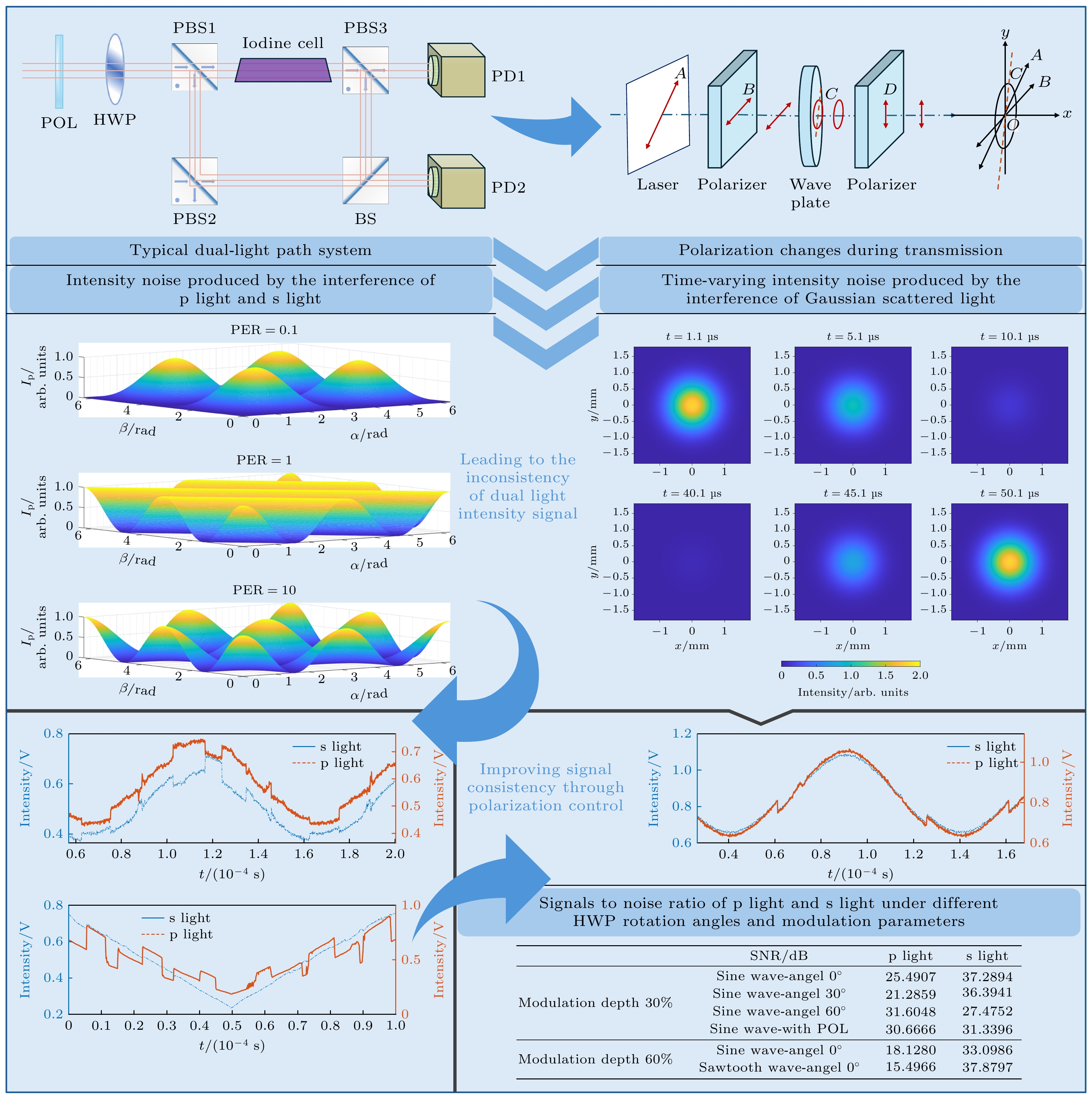
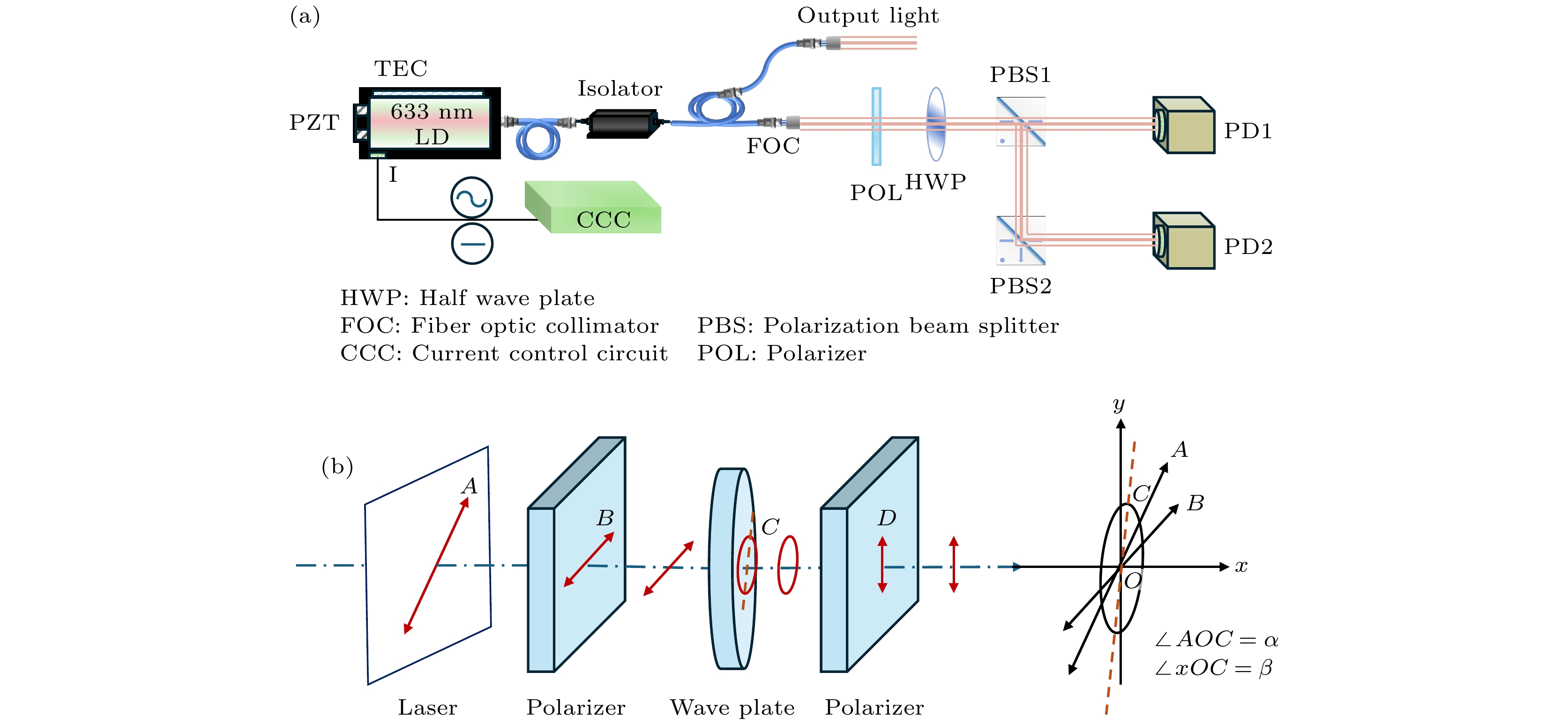
 下载:
下载:
